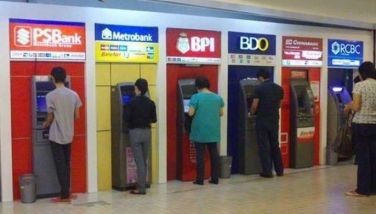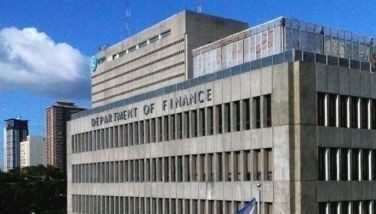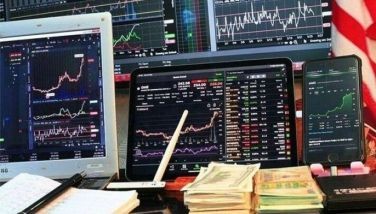Long-term investor

Fund managers allay the jitters of their clients over market dips and the roller-coaster performance of stock prices by reminding them of market cycles. This historic behavior of markets is established. The only uncertainty i determining when the market has bottomed out and more importantly when it will rise again. Here is a chart showing the cyclical nature of the market.
Coming in, the investor is warned (or maybe reminded) that he should not be looking at the stock price every minute, unless it is only to check the volume of transaction and the band of the fluctuations. He is told to set aside money for investment which he will not need for such pedestrian short-term requirements as his children’s tuition fees or next month’s electric bills. This is like the admonition of tour guides to be careful with their handbags when strolling down the old section of Budapest as gypsies (always victims of stereotypes for petty theft) can spot the tourist and make him part with his passport and euros. The fund manager, like the tourist guide, provides these caveats as a way of managing expectations downwards.
If a stock bought at 10 a.m. at the third floor then takes a dip to the basement 30 minutes later, seemingly looking for parking, the investor is not to panic and take out his calculator to estimate his intra-day loss but to take a more philosophical view. He is introduced to the concept of “paper losses”, which is defined as a reduction of value which is only virtual, like the armies in the movie “300”. The loss becomes real only when the investor panics and sells. This same concept applies to “paper profits”, which is more dangerous as purchases are premised on gains not yet realized, until sold.
With the drop of the PSE Index from its peak only late last year of about 34 percent, there are surely many losses absorbed, whether real or paper.
It is at this point that the casino-type investor, out for a quick buck from insider info sourced given by a friend of a friend, is transformed to a long-term investor. And if he is trading on margin, he already understands the difference between the two kinds of losses.
Holding on to the belief that the market can yet go up to the 4,000 level before one’s grandchildren now being toilet-trained become stockbrokers themselves doesn’t necessarily lead to a “fasten your seatbelt” mentality, meaning that one just closes his eyes and rides out the correction, although an extended drop (sometimes referred to as free fall) does not fall in this category. Opportunities still exist for averaging down on dips and taking advantage of temporary upticks in price for a part of the portfolio.
There are still many bright spots. Mining, for one, as a sector benefits from the strength of the price of gold and copper and the weakening peso from the latest inflation May numbers of 9.6 percent, a nine-year high. We are referring here to operating mines and not engineering drawings.
There are signs too that the market is bottoming out and therefore due for its cyclical climb back.
John Maynard Keynes, the father of demand economics and the Keynesian theory, famously said that, “In the long run, we are all dead.” This much quoted passage from his work, “A Tract on Monetary Reform” (1923) does not really argue for a bias on short-term gains. The quote is prefaced by the sentence—“Long run is a misleading guide to current affairs”. He was in fact criticizing the belief that inflation corrects itself in the long run without the need for any government intervention with a change in monetary policy, like raising interest rates.
While it is true that the casino mentality in the stock market should be discouraged and balanced by a longer term view, an exit strategy and time frame (of at least six months) should be kept in mind. The bias should still be in holding on to stocks with fundamental values. When asked how long he likes to keep the stocks he picks, Warren Buffet famously and succinctly answered — “forever.” We are looking at something less long term than that.
Still, this corner believes that the forces adversely affecting stock values are mostly external, the price of oil, food, and the coupling effect of the sub-prime woes, at least on the emerging market funds that includes the local stocks, especially those also traded in Wall Street. Corporate earnings of the big market caps are still healthy and provide decent PE ratios.
On balance, the ones with the long term view will win out. Remember when PLTL was .17, only six years ago. What about when TEL was PHP 209 only six years ago? Now PLTL is doing 7.60 and TEL is priced at 2,345. The caveat here is to choose solid companies with good management.
The profits of the long term investor are worth the patience such an approach requires.
- Latest
- Trending
































